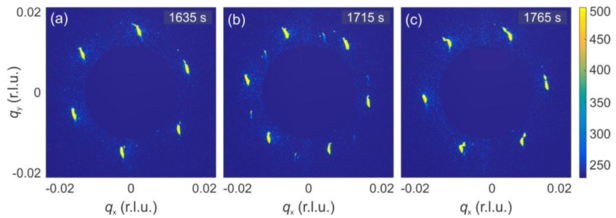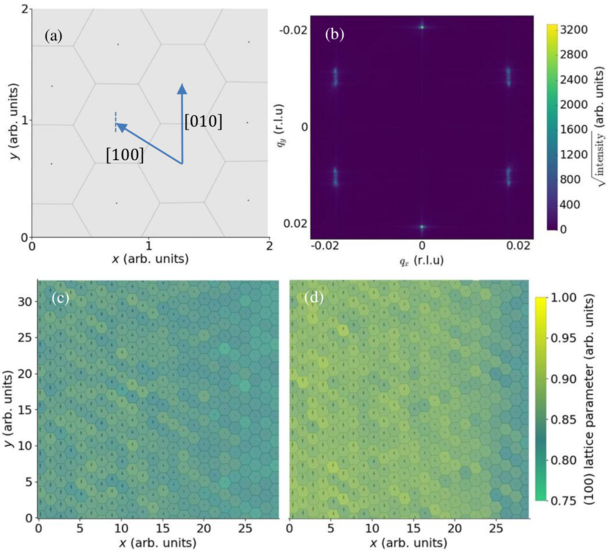 Figure 4: Images depicting the motion of 5-7 defects in molecular dynamics simulations of a
skyrmion lattice under a driving force parallel to the y-axis, Fy ∝ −x.
(a) A frame containing
a single 5-7 defect. The green Voronoi cell (left) contains a skyrmion with 7 nearest
neighbors while the red cell (right) has only 5. (b) The modulus of the structure factor of a
system containing a 5-7 defect, rotated by 90°
for comparison with figure 1. The observed
peak splitting in reciprocal space reflects the fact that defects drive the domain boundary
between extended and contracted lattice parameter domains in real space. (c) An image of a
skyrmion system under shear force, where arrows depict the relative motion of each
skyrmion/defect. If a skyrmion has 6 nearest neighbors, the color of its Voronoi cell denotes
the magnitude of the local [100] lattice parameter and the edges of each Voronoi cell are
drawn in with dark lines; 5-7 defects are colored in white. (d) As in (c), but the system has
been evolved further in time. Here the 5-7 defect is travelling by gliding antiparallel to the
motion of the skyrmion lattice with far greater speed, driving the boundary between
extended and contracted lattice parameter domains.
Figure 4: Images depicting the motion of 5-7 defects in molecular dynamics simulations of a
skyrmion lattice under a driving force parallel to the y-axis, Fy ∝ −x.
(a) A frame containing
a single 5-7 defect. The green Voronoi cell (left) contains a skyrmion with 7 nearest
neighbors while the red cell (right) has only 5. (b) The modulus of the structure factor of a
system containing a 5-7 defect, rotated by 90°
for comparison with figure 1. The observed
peak splitting in reciprocal space reflects the fact that defects drive the domain boundary
between extended and contracted lattice parameter domains in real space. (c) An image of a
skyrmion system under shear force, where arrows depict the relative motion of each
skyrmion/defect. If a skyrmion has 6 nearest neighbors, the color of its Voronoi cell denotes
the magnitude of the local [100] lattice parameter and the edges of each Voronoi cell are
drawn in with dark lines; 5-7 defects are colored in white. (d) As in (c), but the system has
been evolved further in time. Here the 5-7 defect is travelling by gliding antiparallel to the
motion of the skyrmion lattice with far greater speed, driving the boundary between
extended and contracted lattice parameter domains.
|


